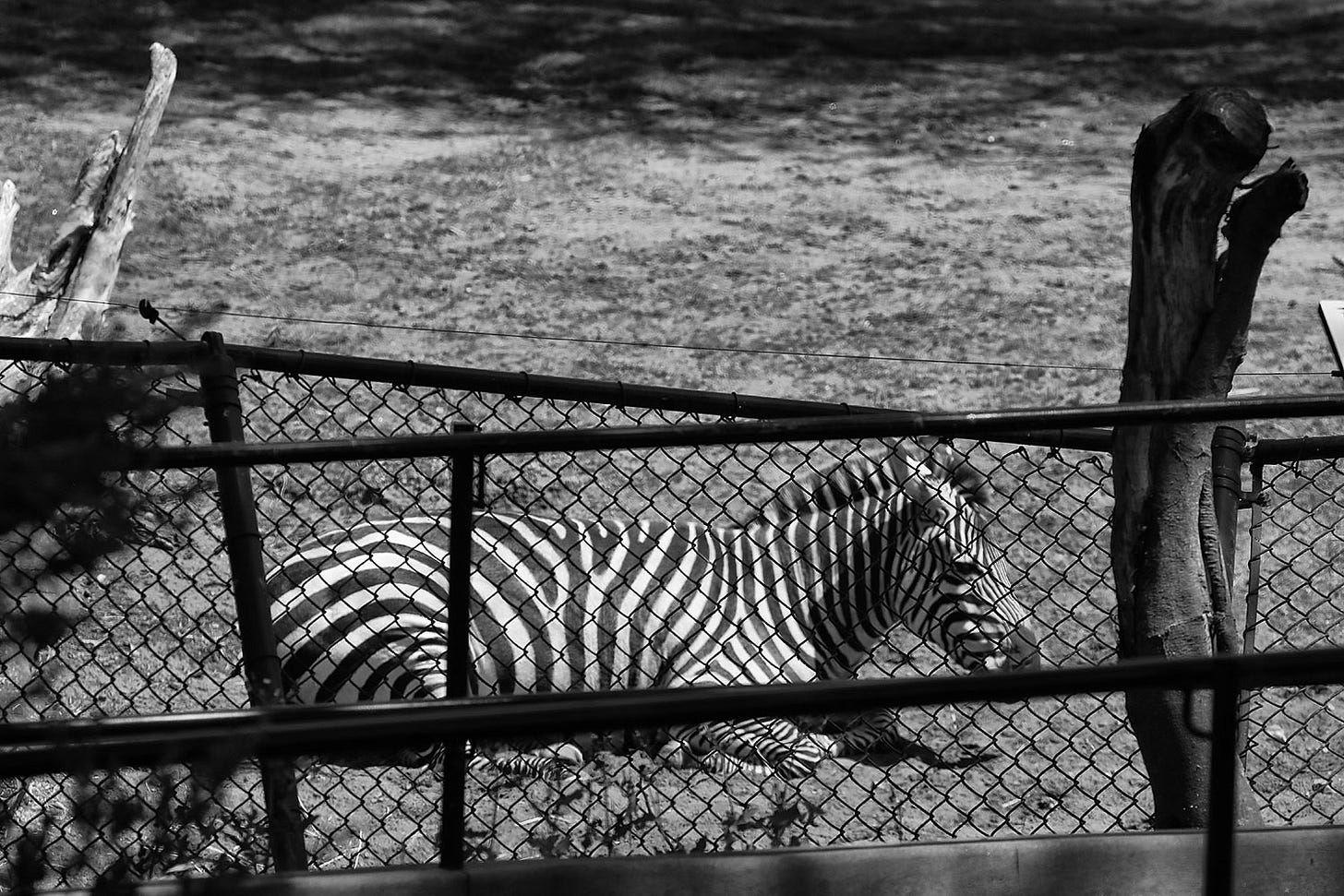San Francisco Zoo Withholds Full AZA Report, Releases Summary of Troubling Zoo Findings
Summary of 2022 AZA accreditation review reveals a zoo defined by secrecy, decaying infrastructure, and leadership failures — and a Zoo still unwilling to tell the full truth.

In response to a recent public records request, San Francisco Zoo Watch received what the City of San Francisco identifies as the “responsive record” for the zoo’s 2022 Association of Zoos & Aquariums (AZA) accreditation report. The record provided is not the full report but 10 pages of what is normally a 35-50 page report. Even so, this partial release paints a deeply concerning picture of systemic issues at the San Francisco Zoo.
Key findings from the AZA inspection:
Leadership crisis and culture of fear. The AZA described “a significant gap in communication” between executives and staff, noting “a fear of retaliation” and “a lack of visibility of the CEO.”
Unsafe and deteriorating facilities. Inspectors found extensive rust and corrosion in major animal enclosures, no fire detection systems in several animal buildings, and structural decay in WPA-era facilities.
Poor planning and oversight. The zoo’s master plan was described as “poorly defined and not vision-driven.” Staff were excluded from design decisions, leading to dangerous flaws such as the snow leopard exhibit, which required reconstruction after completion.
Stagnant funding and inequitable pay. The City’s $4 million annual contribution has not increased since 1992, leaving the zoo struggling to maintain staff and infrastructure amid rising costs.
Editor’s Note: We previously reported that the San Francisco Zoo had provided an AI-generated summary of its 2022 Association of Zoos & Aquariums (AZA) accreditation review. It has since come to our attention that the document was not AI-generated, but rather a partial release — just 10 pages of what is typically a 35–50 page report.
A Long Fight for Public Access
After six years of public records requests, appeals, and delays, the City of San Francisco’s Recreation and Park Department sent what it called “responsive records” for the zoo’s 2022 accreditation review. What arrived was not the inspection team’s full report — but a distilled, narrative version of the report.
This summary omits key data, rankings, and quotes typically found in AZA documents, raising new questions about how the City handles public information requests related to the zoo.
Even so, what remains reveals a deeply troubled organization under former CEO Tanya Peterson, whose leadership and governance were explicitly criticized by the AZA.
Leadership Breakdown and Fear of Retaliation
One of the strongest themes in the AZA report is the disconnect between executive leadership and staff.
“There appears to be a significant gap in communication from the executive level throughout the rest of the staff, and a lack of transparency of zoo operation decision-making to staff. This gap contributes to frustration and mistrust among staff at all levels… including a fear of retaliation.”
Inspectors noted years without all-staff meetings and “a lack of visibility of the CEO.”
They concluded that leadership viewed communication as strictly top-down, leaving little opportunity for open dialogue or feedback.
Such language is rare in AZA reports and underscores the severity of the leadership dysfunction that defined Peterson’s tenure.
Crumbling Infrastructure and Safety Risks
While praising staff for their dedication, the AZA raised serious concerns about the physical condition of the zoo’s facilities.
Inspectors documented ongoing structural decay, including rusting steel in the giraffe restraint chute, a problem first cited in 2016 and described as “continued and worsening.”
They also found no fire detection systems in multiple animal buildings, including lemur and aviary structures — a clear welfare and safety hazard.
The zoo’s veterinary facilities were called “aging and undersized,” forcing staff to work in tight, outdated spaces with limited diagnostic capacity.
Despite these limitations, the AZA noted that keepers and scientists were providing exceptional care, describing the zoo’s animal welfare research program as “groundbreaking and industry-leading.” That excellence, however, exists in spite of the institution’s physical neglect.
A Master Plan Without a Map
The AZA inspection team found that the zoo’s updated 2021–2023 strategic plan was “poorly defined and not vision-driven.”
“Staff appear to have minimal input or understanding of the master plan,” inspectors wrote.
They described confusion and lack of coordination around key projects, including the Madagascar Center, Andean condor exhibit, and the long-delayed Coastal California redevelopment.
Because animal experts were excluded from the design process, some exhibits had to be retrofitted for safety after construction — most notably the snow leopard habitat, which could not safely house animals as built.
Financial Fragility and Stagnant Support
The AZA report also drew attention to the zoo’s financial imbalance.
The City’s $4 million contribution — unchanged for more than 30 years — has failed to keep pace with inflation, leaving little funding for staff wages or infrastructure renewal.
Inspectors warned that San Francisco’s high cost of living made it difficult to recruit and retain staff and urged city and zoo leaders to revisit the funding model.
A Culture of Secrecy Persists
The Zoo’s decision to release a summary rather than the full AZA report, reflects a continued reluctance to provide full transparency. Even under the zoo’s new interim leadership, this partial disclosure suggests a desire to manage the public narrative rather than open the books.
By withholding the full report, officials obscure the scale of what the AZA actually found — the breakdown in morale, structural neglect, and governance failures that continue to define the institution.
SF Zoo Watch will continue to pursue the full, unredacted 2022 AZA report and press for transparency worthy of the animals, staff, and citizens of San Francisco.
See the narrative report:
